This article was medically reviewed by Luba Lee, FNP-BC, MS. Luba Lee, FNP-BC is a Board-Certified Family Nurse Practitioner (FNP) and educator in Tennessee with over a decade of clinical experience. Luba has certifications in Pediatric Advanced Life Support (PALS), Emergency Medicine, Advanced Cardiac Life Support (ACLS), Team Building, and Critical Care Nursing. She received her Master of Science in Nursing (MSN) from the University of Tennessee in 2006.
wikiHow marks an article as reader-approved once it receives enough positive feedback. This article received 24 testimonials and 89% of readers who voted found it helpful, earning it our reader-approved status.
This article has been viewed 5,048,313 times.
Splinters can sometimes be removed with baking soda and a bandaid. You will have to clean and dry the area and then apply baking soda to the splinter. Place a bandaid over the splinter and then remove it after a few hours. The splinter should come out. Make sure to use antibiotic ointment to prevent an infection and see a doctor if a splinter becomes infected. A splinter may put you at risk of a tetanus infection. Make sure your Tdap immunization is up to date.[1]
Steps
Cleaning and Inspecting the Area
-
1Do not squeeze the splinter. When cleaning or examining the area surrounding the splinter, you may be tempted to squeeze the surrounding skin to get a better look. This can cause the splinter to break into smaller fragments or become stuck deeper in the skin. Never squeeze the splinter or surrounding skin while removing the splinter.[2]
-
2Examine the area. Use a magnifying glass if need be. See how big the splinter is and see the angle it's going into the skin. This can help you avoid pressing the splinter deeper into the skin when applying your paste and bandaid. Make sure not to press on the splinter in the direction it's angled into your skin.Advertisement
-
3Clean and dry the area. You want to make sure to avoid an infection when dealing with a splinter. Before you attempt to remove the splinter, clean the skin around the where the splinter is stuck. Wash your skin with soap and water and then gently pat the area dry with a paper towel.[3]
- Make sure to wash your hands before washing the skin around your splinter.
Removing the Splinter
-
1Make a paste with baking soda and water. In a small cup or other container, add a generous amount of baking soda. Then, add in water in small increments and mix until you form a thick paste. There is no precise ratio of baking soda to water. You just need to add enough that you end up with a spreadable paste.[4]
-
2Apply your paste to the splinter. Use your fingers or a paper towel to gently dab the paste over your splinter. Add a light layer of paste to the splinter and the surrounding skin.[5]
- Be careful not to push the splinter in deeper when applying the paste. Remember the angle in which it's driven into the skin and be gentle when applying baking soda at this angle.
-
3Cover the spot with a Band-Aid. Place a Band-Aid over the paste. Make sure to cover the splinter completely with the cotton portion of the Band-Aid. The type of Band-Aid does not matter as long as it fits over the splinter.[6]
-
4Remove the Band-Aid after a few hours. Wait anywhere from an hour to a day to remove the Band-Aid. Splinters that are stuck in deep will generally require more time. When you remove the bandaid, the splinter should come out easily.[7]
- If the splinter does not come out by itself as you pull off the band aid, try gently squeezing it with tweezers (sterilize tweezers with alcohol before using).
- If the splinter does not come out the first time, or is still very deep, try repeating the process and leaving the bandaid on longer, up to 24 hours.
- Rinse the area with soap and water and apply antibiotic ointment after the splinter comes out.
- You may also cover the area with a bandaid after the splinter has been removed to help with the healing process.
Taking Safety Precautions
-
1Apply an antibiotic ointment to the area. It is a good idea to apply antibiotic ointment after removing the splinter. This will help prevent an infection. You can get an antibacterial ointment at any drug store. Apply the ointment as directed.[8]
- For example, use a cream from a drug store like Neosporin to cover the wound.[9]
- If you're on existing medication, check with a pharmacist before selecting your ointment. You want to make sure the ointment you choose will not interfere with your current medication.
-
2Control bleeding if necessary. Sometimes, your skin will bleed after you remove a splinter. Press firmly around the area where the splinter was. This will bring the skin together to patch up the wound and stop bleeding. You may also need to apply a bandaid.[10]
-
3Seek medical attention under certain conditions. If a splinter will not come out and is causing heavy bleeding, you may need medical attention. You also may need medical attention for a splinter that's underneath a fingernail or toenail. If you are not up to date on your vaccinations, you should see a doctor if you get a splinter to make sure you don't need something like a tetanus shot to prevent infection.[11]
Expert Q&A
-
QuestionWill it work with a thorn?
 Luba Lee, FNP-BC, MSLuba Lee, FNP-BC is a Board-Certified Family Nurse Practitioner (FNP) and educator in Tennessee with over a decade of clinical experience. Luba has certifications in Pediatric Advanced Life Support (PALS), Emergency Medicine, Advanced Cardiac Life Support (ACLS), Team Building, and Critical Care Nursing. She received her Master of Science in Nursing (MSN) from the University of Tennessee in 2006.
Luba Lee, FNP-BC, MSLuba Lee, FNP-BC is a Board-Certified Family Nurse Practitioner (FNP) and educator in Tennessee with over a decade of clinical experience. Luba has certifications in Pediatric Advanced Life Support (PALS), Emergency Medicine, Advanced Cardiac Life Support (ACLS), Team Building, and Critical Care Nursing. She received her Master of Science in Nursing (MSN) from the University of Tennessee in 2006.
Board-Certified Family Nurse Practitioner A thorn is like a splinter but perhaps bigger, so it should work for extracting a thorn.
A thorn is like a splinter but perhaps bigger, so it should work for extracting a thorn. -
QuestionCan I remove a splinter with baking soda if I'm diabetic?
 Luba Lee, FNP-BC, MSLuba Lee, FNP-BC is a Board-Certified Family Nurse Practitioner (FNP) and educator in Tennessee with over a decade of clinical experience. Luba has certifications in Pediatric Advanced Life Support (PALS), Emergency Medicine, Advanced Cardiac Life Support (ACLS), Team Building, and Critical Care Nursing. She received her Master of Science in Nursing (MSN) from the University of Tennessee in 2006.
Luba Lee, FNP-BC, MSLuba Lee, FNP-BC is a Board-Certified Family Nurse Practitioner (FNP) and educator in Tennessee with over a decade of clinical experience. Luba has certifications in Pediatric Advanced Life Support (PALS), Emergency Medicine, Advanced Cardiac Life Support (ACLS), Team Building, and Critical Care Nursing. She received her Master of Science in Nursing (MSN) from the University of Tennessee in 2006.
Board-Certified Family Nurse Practitioner You should be fine using baking soda for splinter removal. Make sure to clean the skin and apply antibiotic ointment and a bandaid after removing the splinter. Since you are diabetic, you might be more at risk for delayed healing and therefore infection. Monitor the area for signs of infections such as increased redness, swelling and tenderness.
You should be fine using baking soda for splinter removal. Make sure to clean the skin and apply antibiotic ointment and a bandaid after removing the splinter. Since you are diabetic, you might be more at risk for delayed healing and therefore infection. Monitor the area for signs of infections such as increased redness, swelling and tenderness.
Things You'll Need
- Baking soda
- Water
- Soap
- Bandages
- Gauze
- Alcohol or alcohol pads
References
- ↑ http://www.immunize.org/catg.d/p4220.pdf
- ↑ https://www.aad.org/public/everyday-care/injured-skin/burns/remove-splinters
- ↑ https://www.aad.org/public/everyday-care/injured-skin/burns/remove-splinters
- ↑ http://www.healthyfoodhouse.com/how-to-painlessly-remove-a-splinter-with-baking-soda/
- ↑ http://www.healthyfoodhouse.com/how-to-painlessly-remove-a-splinter-with-baking-soda/
- ↑ http://www.healthyfoodhouse.com/how-to-painlessly-remove-a-splinter-with-baking-soda/
- ↑ http://www.healthyfoodhouse.com/how-to-painlessly-remove-a-splinter-with-baking-soda/
- ↑ http://www.mayoclinic.org/first-aid/first-aid/basics/art-20056604
- ↑ http://www.mayoclinic.org/first-aid/first-aid-cuts/basics/art-20056711
About This Article
To remove a splinter with baking soda, start by washing the affected area with soap and water to prevent an infection. Then, put some baking soda in a small bowl and add just enough water to make a thick paste. Next, gently dab the paste over and around the splinter, then cover the area with a Band-Aid and remove it after a few hours. If the splinter doesn’t come out by itself as you take off the Band-Aid, try repeating the process and leaving the Band-Aid on longer. For more advice from our Medical reviewer, like how to take care of your skin once the splinter is out, read on!

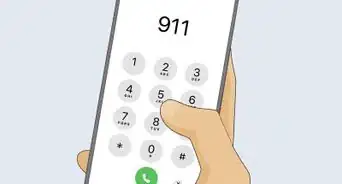

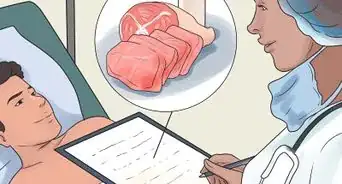
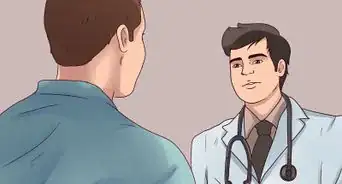
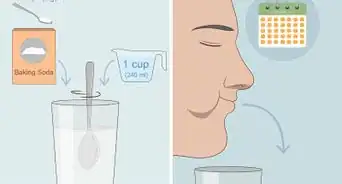
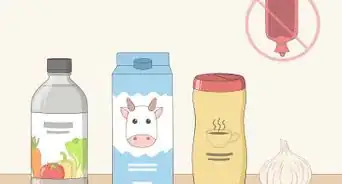
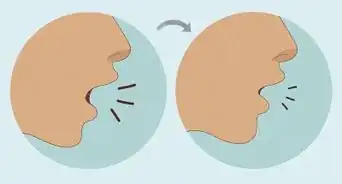

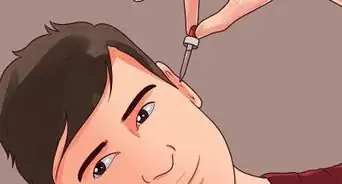

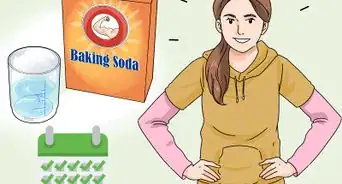

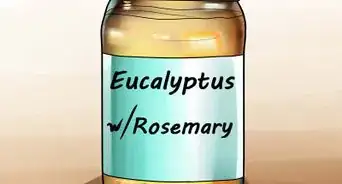










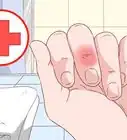

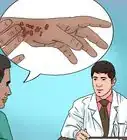
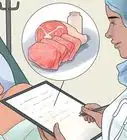




































Medical Disclaimer
The content of this article is not intended to be a substitute for professional medical advice, examination, diagnosis, or treatment. You should always contact your doctor or other qualified healthcare professional before starting, changing, or stopping any kind of health treatment.
Read More...